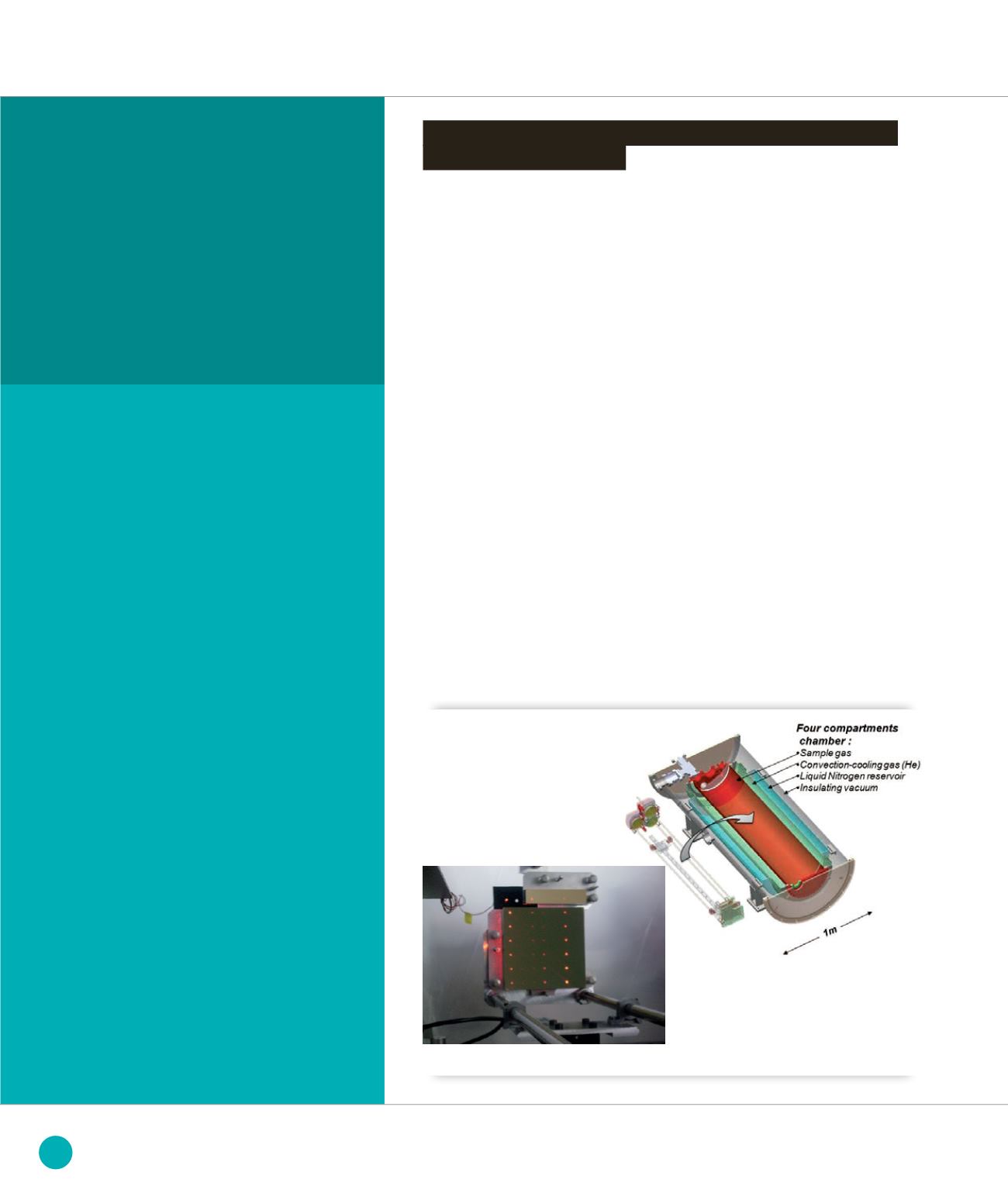
A new tool for greenhouse
gases Infrared absorption
modelling
Infrared (IR) spectroscopy plays a key role
for the remote sensing of atmospheric or
astrophysical systems, in particular for the
quantification of important gases for the
radiation budget of the Earth’s atmosphere.
This has motivated the development of a
long-path cryogenic gas cell at Soleil, in
collaboration with the LISA (CNRS-U. D.
Diderot and Paris-Est). Measurements at
different temperatures are used to study
these molecules in in situ conditions or to
depopulate excited vibrational or rotational
levels, a prerequisite for analysis and
modelling of their IR absorption.
A unique, specific cryogenic gas cell,
homogeneously cooled or heated between
-190 and +100°C, compact and stable
enough to be used on the AILES beamline,
yet capable of generating optical paths
between 3 and 145 meters long, has been
developed at SOLEIL. The cell operates in
both mid and far IR ranges, allowing easy
switching and a rapid change of optical path.
➊
Schematic viewcut of the cryogenic multi pass Infrared gas cell
For our purpose, the distance light travelled
in the absorbing gas can be controlled
between 3 and 140 meters, but also at
temperatures between -190 and +100°C.
The cell construction involved corrosion-
resistant materials, IR optics compatible
with low temperatures, ultra high vacuum
and cryogenic systems that do not
generate any acoustic vibration.
The design was based on the 5-mirror
arrangement of Chernin and Berskaya
[1] recirculating the beam a number
of times between two sets of mirrors
(figure
➊
). This generates long optical
path lengths, refolding the beam on
itself, making up to 48 round trips in the
cell. It enables optimally filling the cell
volume and excellent vibrational stability
characteristics. Metal mirrors with gold
and hard alumina ultrathin coating were
employed for their good chemical or
mechanical resistance and high reflectivity
(99% or better). All mirror holders are
equipped with computer-controlled
micrometers for optical adjustments and
path changes, even at low temperature.
A laser can be injected coaxially to the
IR beam axis, to check the optical path
without venting the interferometer for
checking the alignment with visible light
(figure
➊
, insert).
Measuring down to 30 cm
-1
imposes here
a 12 mm focus point size. All elements are
thus dimensioned to have twice the focus
diameter between two adjacent foci and
yet up to 6 columns and 8 rows of focus
spots on the field mirrors, yielding a 141
m maximum path length. For the broad
spectral coverage, diamond windows were
brazed on the stainless steel envelopes
for letting the infrared beam in and out
the sample gas cell and the outer Dewar
vacuum chamber.
Interferometry is very sensitive to
vibrations and care was taken to
minimize any source of acoustic noise.
Thus, a concept with a completely static
configuration was chosen (no forced
circulation pump, no closed-cycle cooler)
including a large cryostat around the cell
body. Here, the cooling power originates
from the heat of vaporization of liquid
nitrogen, keeping a surrounding jacket
at a constant 77 K temperature. The gas
is brought at low temperature through
radiative and convection cooling by filling
an intermediate jacket with helium gas.
The helium pressure can be varied to
adapt the cooling power to the desired
end temperature. A totally vibration-free
operation is ensured by cryogenic trapping
and the use of ion pumps.
Cryogenics and IR optics, a long pathway and stability:
conflicting demands…
MODELING, METHODOLOGY AND INSTRUMENTATION
122
SOLEIL
HIGHLIGHTS
2013


